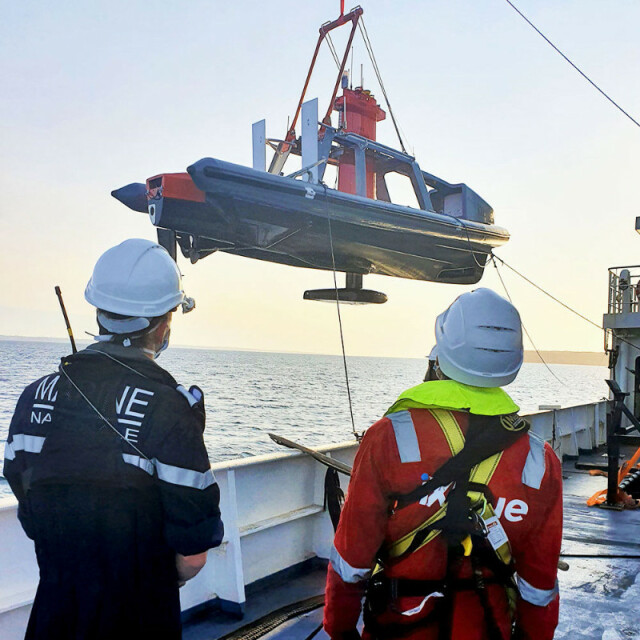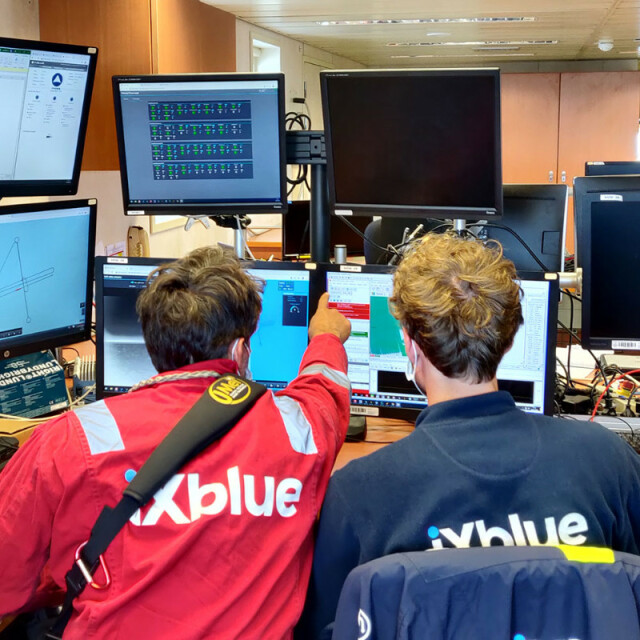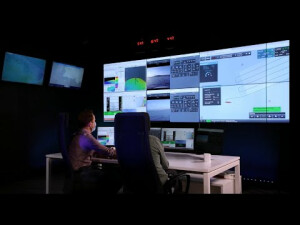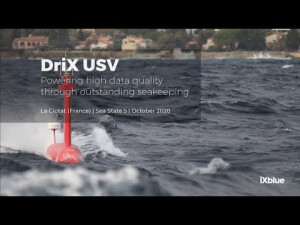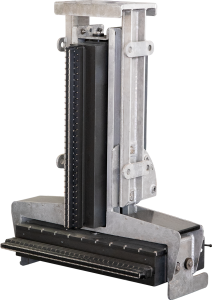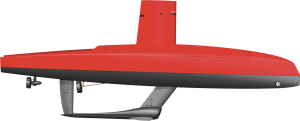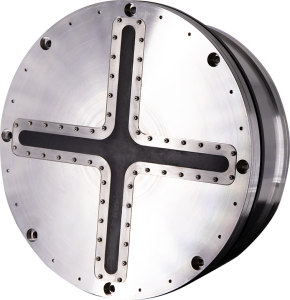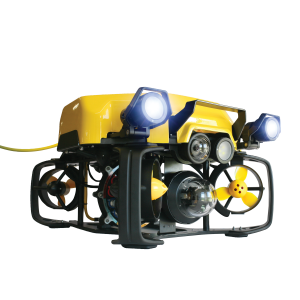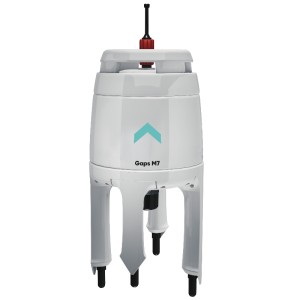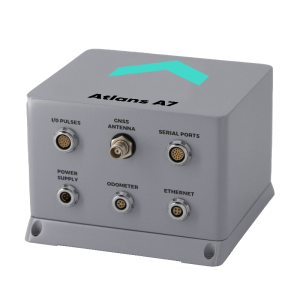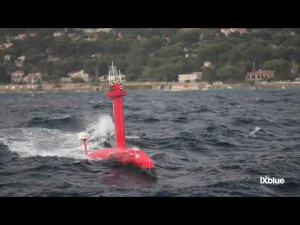
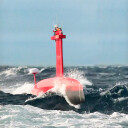


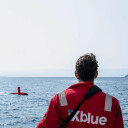
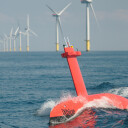
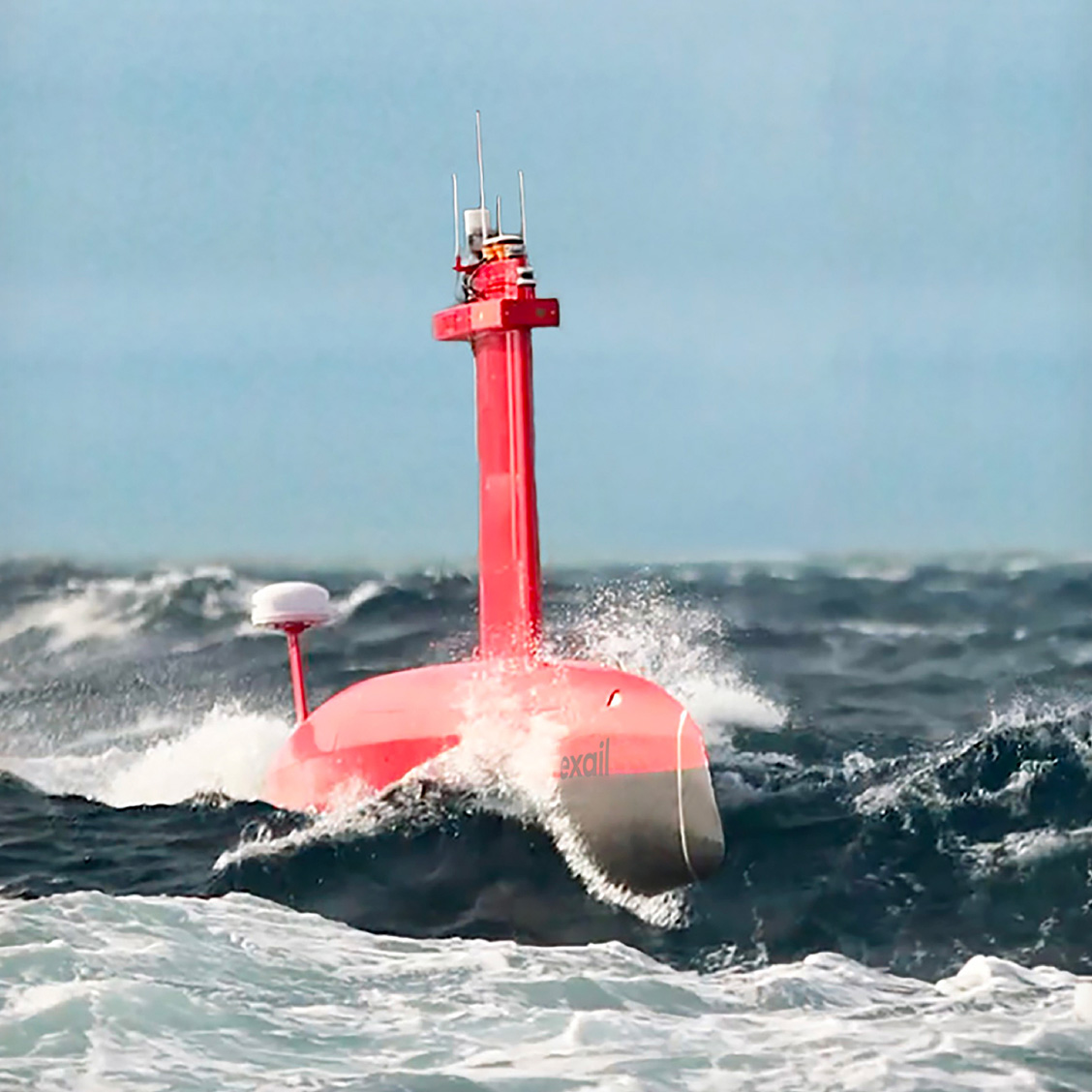




DriX
DriX, a seasoned USV in the environment of supervised autonomy
With over 10,000 hours in operations around the world, iXblue DriX USV, along with its efficient launch and recovery system, is a seasoned asset in the environment of supervised autonomy. A true force-multiplier, DriX is able to conduct both remote-controlled and supervised autonomous operations (within visual range or Over The Horizon), and offers outstanding seakeeping and speed capabilities for high quality data acquisition and subsea positioning in both shallow and deep waters.

Description
Overview
With over 10,000 hours in operations around the world over the past three years, iXblue’s DriX USV, along with its efficient launch and recovery system, is a seasoned asset in the environment of supervised autonomy.
Able to conduct both remote-controlled and supervised autonomous operations (within visual range or Over The Horizon), DriX offers outstanding seakeeping and speed capabilities. It is a versatile and efficient USV that can host a wide range of payloads and that offers optimum conditions for high quality data acquisition in both shallow and deep waters.
Outstanding seakeeping and speed capabilities
DriX highly hydrodynamic monohull and drop keel provide exceptional stability and balance to the platform.
The USV will pierce waves and cannot capsize, even in high sea states. Keeping movements to a minimum, the USV ensures high stability. Thus widening the onboard sensors operation window.
DriX shape and stability allows for very high-speed capabilities (up to 14 knots), reducing transit downtime and providing high survey speeds with optimal data quality, harvested in a fraction of the usual times.
As far as endurance is concerned, DriX can sail for 7 days at 7 knots. At its top speed (14 knots), DriX can maintain continuous operations for 24 hours, while a speed of 4 knots will be required for a 10-day mission.
Very high data quality
All sensors are embedded within a gondola located 2m below the surface, in a highly reduced-noise and bubble-free environment. This offers optimum conditions for high quality data acquisition. Exceptional acquisition conditions are further induced by DriX outstanding line keeping, including in high sea states (up to sea state 5) and cross current situations. It also has been noted that the post-processing phase of a project using DriX was reduced by half thanks to the very high quality of the collected data.
An environmentally conscious & economical platform
DriX is made out of composite material. This means the USV is lighter than its Marine Steel or Aluminum counterparts. It also means it is not submitted to corrosion. DriX lightweight also enables the USV to be powered by smaller engines for the same level of performance. The direct consequences are:
- Lower fuel consumption (brought even lower by DriX shape)
- A reduction of the greenhouse gas emission
- Less radiated noise in the water
From shallow to deep water
DriX is a versatile USV able to work in both shallow and deep water, enhancing its working domains. With a draft of 2m, DriX is able to conduct missions in coastal shallow waters down to 4-meter depths with all types of shallow water MBES. The USV can also operate in deep offshore thanks to its AUV tracking and communication capabilities allowed through iXblue’s Gaps USBL and Canopus LBL systems. Existing third-party systems can also be implemented.
A new system that will allow DriX to work down to 3-meter water depths by reducing its draft to 90cm is currently under development for use with an MBES.
A wide range of sensors for multiple missions’ capabilities
DriX comes with a highly versatile payload system. The USV can either be fitted with a standard “universal gondola”, large enough to welcome a wide variety of sensors combinations, including:
- MBES
- INS
- USBL
- SBP
- Velocity Probes...
To switch sensors, operators can either replace the payload directly within the existing gondola, or they can decide to swap the whole gondola, with another one fitted with different sensors. This provides DriX with enhanced mission’s capabilities and takes less than 3 hours. Custom gondolas can also be made upon request.
Above the surface, DriX can also carry various sensors such as cameras, optical sensors, radars and LiDARs.
Obstacle avoidance for security at sea
As far as security at sea is concerned, DriX is fitted with an advanced collision avoidance system that uses data fusion thanks to DriX wide variety of embarked navigation sensors (video and IR cameras, LiDAR, radar…). Combined to DriX second-to-none maneuvering skills (180° turn in 17 yards at 14 knots), this allows for very safe navigation, even within restricted areas.
High speed transit with Follow Me Mode
Thanks to its advanced collision avoidance system and Follow Me Mode (FMM), DriX is able to transit over large expanse of sea at high speed, while staying in the wake of the Mother Vessel (MV).
Command & Control of the USV
DriX is able to conduct both remote-controlled and supervised autonomous operations. Within the latter, DriX performs its missions by itself while the pilot supervises the operations, either within or beyond visual range (Over The Horizon).
Over The Horizon operations
Over the Horizon (OTH) capabilities are fundamental to autonomous operations. DriX outstanding endurance and stability, even in rough seas where human presence becomes hazardous, makes it an invaluable asset capable of:
- Selecting the best communication mode depending on the environment (SATCOMM, 4G…)
- Enhancing the use of the bandwidth to gain efficiency, reduce costs and guarantee critical data priorities
- Working perfectly with a minimum bandwidth
- Providing remote access for immediate support on request
The OTH monitoring can be done from any location on the planet, providing there is a high internet bandwidth to connect to the DriX USV(s) on a dedicated cloud and via a secured encrypted link. From iXblue’s own control center, we are able to monitor, in real-time, our USV(s):
- Status,
- Telemetry & Power Supply Management
- HMI features (including camera video streams, survey line plan…)
- Survey computer with all key information (including quality control)
Efficient multi-DriX operations
Using multiple DriX USVs is an efficient and easy way to optimize your surveys efficiency. While DriX outstanding seakeeping allows the surface unmanned platform to perform extremely well in both favorable and severe weather conditions, using multiple USVs during every weather window available will enhance survey productivity and efficiency. Where traditional survey vessels would be on standby up to 50% of the time due to bad weather conditions, DriX USV brings flexibly and keeps downtime to a minimum.
Multiple DriX can either be fitted with the same sensors and be used on the same survey zone, or they can perform separate missions using different sensors. Deploying multiple DriX is made easy thanks to a dedicated HMI that displays all the various DriX data on the same user-friendly interface (cameras, telemetry, power supply management, navigation window…). This allows one single operator to manage multiple DriX missions with ease and efficiency and removes the need for additional operators or equipment.
Managing multiple DriX USVs can be done either within visual range using a mother vessel or Over The Horizon from a remote Control Center.
An efficient launch and recovery system
Certified by Bureau Veritas, the DriX Deployment System (DDS) allows for swift and safe deployments and recoveries, up to sea state 3. Benefiting from a RHIB shape and making use of either one or two lifting points, the DDS can be deployed from a davit, a crane or an A-frame. Its state-of-the-art architecture also allows for the automatic docking of the DriX inside the DDS, with no human intervention. This auto-docking capability relies – amongst other things – on continuous exchange of positioning information between DriX (provided by its embedded GNSS and Phins C7 INS) and the DDS (through its GNSS and Quadrans AHRS).
Do you have questions about this product?
- Questions about price, availability, and/or retailers
- Questions about technical specifications and usage
- Questions about suitability for your project or application
Specifications
-
More information
-
Applications
MBES; Side Scan Sonar; Sub Bottom Profiler; ADCP; Lidar; Cameras and optical sensors
Distinguishable features
In tunes with existing international regulations;Welcomes third party equipment;Data-sharing within Line Of Sight (WiFi), or in-cradle-retrievalwhen DriX is in its Launch And Recovery System;up to 7 days endurance
-
General
-
Length [m]
7.71
Width [m]
0.824
Height [m]
3.2
Portable
Y
Draft [m]
2
Number of thrusters
1
Chassis
Kevlar reinforced
-
Communication and Control
-
Type of Communication
WiFi, radio, contact for SATCOMS
Emergency recovery procedure
Take me home function
-
Operations
-
Launch and Recovery System
Homing device for safety recovery
Max. speed [kn]
14
Min. crew size
0
-
Energy and Propulsion
-
Propulsion
Marine
Propulsion Power
37 HP diesel engine
Endurance at nominal power [hr]
168
Documents


